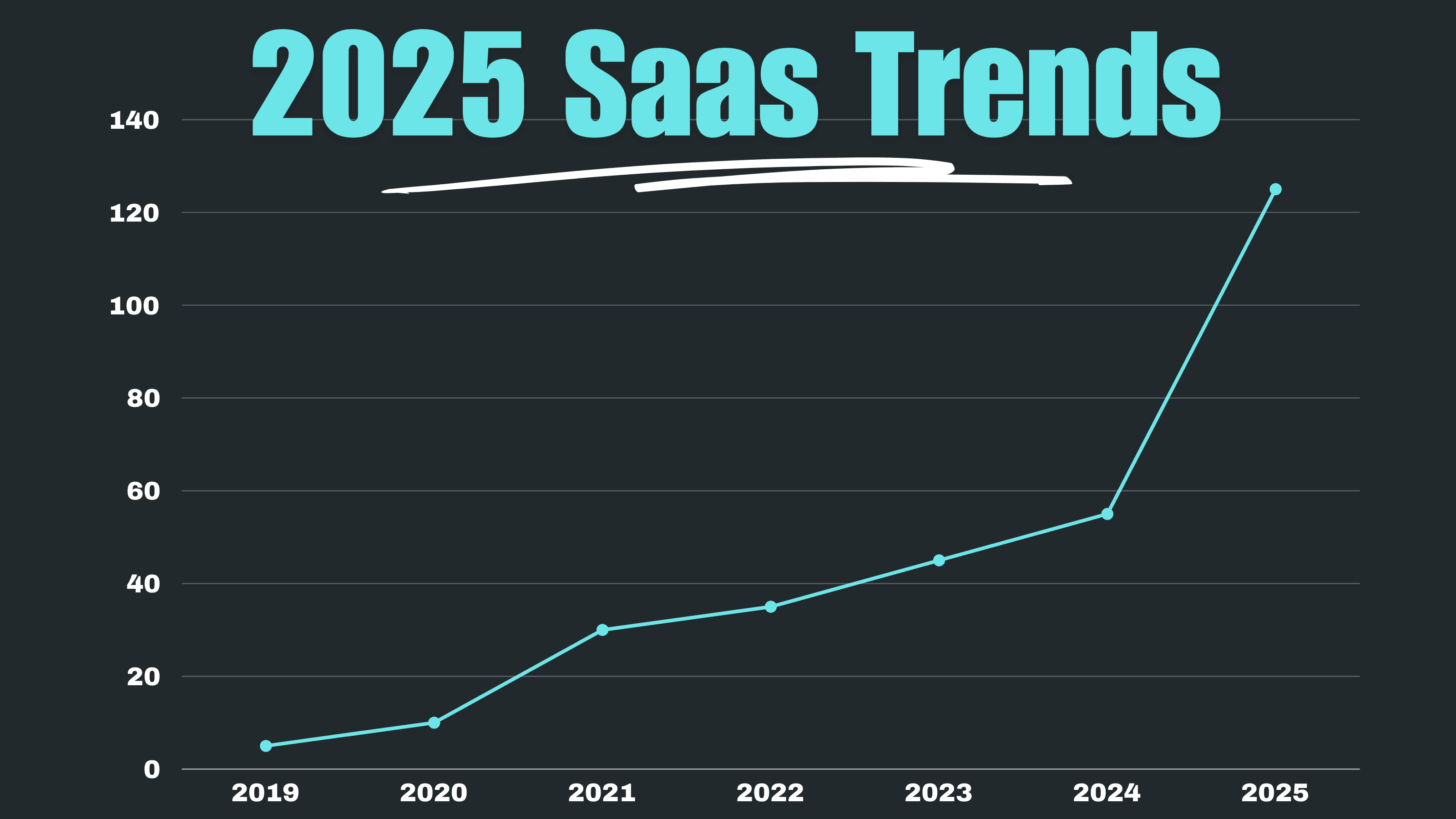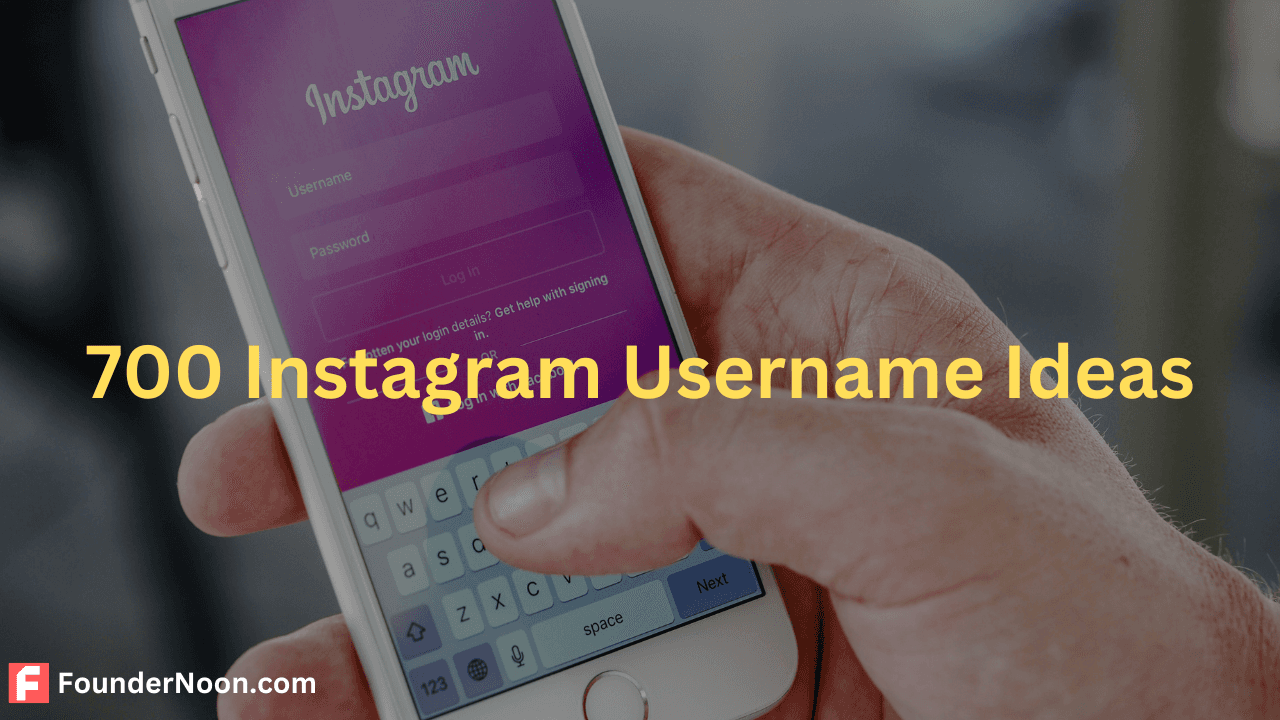Top B2B SaaS Trends to Watch Out for in 2025 – What Every Founder Needs to Know
Top B2B SaaS Trends to Watch Out for in 2025 – What Every Founder Needs to Know



Introduction
Introduction
The B2B SaaS industry is exploding, and with rapid technological advances, new business models, and changing customer expectations, it's set for another transformative year. If you're a SaaS or software founder, keeping up with the trends is crucial to staying ahead of the competition. 2025 is going to be full of opportunities—but only for those who are prepared.
Let’s dive into the top B2B SaaS trends you need to watch out for in 2025. Knowing these will not only help you adapt but could be the key to unlocking new growth for your business.
The B2B SaaS industry is exploding, and with rapid technological advances, new business models, and changing customer expectations, it's set for another transformative year. If you're a SaaS or software founder, keeping up with the trends is crucial to staying ahead of the competition. 2025 is going to be full of opportunities—but only for those who are prepared.
Let’s dive into the top B2B SaaS trends you need to watch out for in 2025. Knowing these will not only help you adapt but could be the key to unlocking new growth for your business.
Contents
Boost your business visibility to thousands of engaged readers!
Get Featured on 100+ pages across the FounderNoon website.
One month stretch ⇢ $100
Three-month stretch ⇢ $250
Boost your business visibility to thousands of engaged readers!
Get Featured on 100+ pages across the FounderNoon website.
One month stretch ⇢ $100
Three-month stretch ⇢ $250
Contents
AI-Powered Automation Will Dominate
AI-Powered Automation Will Dominate
AI has been talked about for years, but it’s no longer just hype. In 2025, AI-powered automation will be at the center of B2B SaaS growth. From chatbots handling customer service to AI-driven analytics, businesses are leveraging machine learning to save time and money while improving efficiency.
Why Is This Happening?
Customers want faster, more personalized experiences, and AI delivers just that. In sales and customer support, AI can predict customer behavior, identify upsell opportunities, and even automate responses based on previous interactions. Plus, AI tools that automate routine tasks free up your team to focus on what matters most—building relationships and driving growth.
How Founders Can Take Advantage
If you’re a SaaS founder, it’s time to think about integrating AI into your product, especially for automating repetitive processes like onboarding, customer support, or data analysis. AI-based tools like predictive analytics can help your customers make better decisions faster, which makes your product indispensable.
Pro tip: Start small. Automate just one part of your platform and see how your customers respond before rolling out a full-scale AI-powered solution.
AI has been talked about for years, but it’s no longer just hype. In 2025, AI-powered automation will be at the center of B2B SaaS growth. From chatbots handling customer service to AI-driven analytics, businesses are leveraging machine learning to save time and money while improving efficiency.
Why Is This Happening?
Customers want faster, more personalized experiences, and AI delivers just that. In sales and customer support, AI can predict customer behavior, identify upsell opportunities, and even automate responses based on previous interactions. Plus, AI tools that automate routine tasks free up your team to focus on what matters most—building relationships and driving growth.
How Founders Can Take Advantage
If you’re a SaaS founder, it’s time to think about integrating AI into your product, especially for automating repetitive processes like onboarding, customer support, or data analysis. AI-based tools like predictive analytics can help your customers make better decisions faster, which makes your product indispensable.
Pro tip: Start small. Automate just one part of your platform and see how your customers respond before rolling out a full-scale AI-powered solution.
Vertical SaaS Will Keep Rising
Vertical SaaS Will Keep Rising
For years, horizontal SaaS (products that serve a wide range of industries) ruled the market. But now, vertical SaaS—niche, industry-specific solutions—are on the rise. Whether it's SaaS for healthcare, education, or manufacturing, businesses want software tailored to their unique needs.
Why It’s a Big Deal
Every industry has its quirks—specific regulations, workflows, and pain points. Vertical SaaS solves these issues by offering highly specialized features, unlike generic solutions. A hospital, for example, needs software that complies with health regulations, while a logistics company might need something with advanced supply chain tracking.
How Founders Can Take Advantage
If you’re already serving multiple industries, 2025 could be the year you niche down. Explore creating industry-specific versions of your product or add-ons tailored to verticals you serve. This way, you’ll offer more value and justify a higher price point.
For years, horizontal SaaS (products that serve a wide range of industries) ruled the market. But now, vertical SaaS—niche, industry-specific solutions—are on the rise. Whether it's SaaS for healthcare, education, or manufacturing, businesses want software tailored to their unique needs.
Why It’s a Big Deal
Every industry has its quirks—specific regulations, workflows, and pain points. Vertical SaaS solves these issues by offering highly specialized features, unlike generic solutions. A hospital, for example, needs software that complies with health regulations, while a logistics company might need something with advanced supply chain tracking.
How Founders Can Take Advantage
If you’re already serving multiple industries, 2025 could be the year you niche down. Explore creating industry-specific versions of your product or add-ons tailored to verticals you serve. This way, you’ll offer more value and justify a higher price point.
Usage-Based Pricing Is on the Rise
Usage-Based Pricing Is on the Rise
Flat-fee subscription pricing is losing its shine. In 2025, expect usage-based pricing (where customers pay based on their actual usage of the product) to become more popular. This model works particularly well for cloud infrastructure and API-based SaaS platforms.
Why Customers Love It
With businesses tightening their belts, many don’t want to commit to a flat subscription that charges the same regardless of whether they're using the product heavily or barely touching it. Usage-based pricing allows businesses to pay only for what they use, making it fairer and more scalable for them.
How Founders Can Take Advantage
If your SaaS solution is something customers can scale up or down (think cloud storage, API calls, or software licenses), a usage-based pricing model could set you apart from competitors still offering flat rates. Plus, it aligns your success with the customer’s success: the more they use, the more they pay.
Pro tip: If you’re not ready for full usage-based pricing, a hybrid model—combining a base subscription fee with usage-based costs—could ease the transition and keep revenue more predictable.
Flat-fee subscription pricing is losing its shine. In 2025, expect usage-based pricing (where customers pay based on their actual usage of the product) to become more popular. This model works particularly well for cloud infrastructure and API-based SaaS platforms.
Why Customers Love It
With businesses tightening their belts, many don’t want to commit to a flat subscription that charges the same regardless of whether they're using the product heavily or barely touching it. Usage-based pricing allows businesses to pay only for what they use, making it fairer and more scalable for them.
How Founders Can Take Advantage
If your SaaS solution is something customers can scale up or down (think cloud storage, API calls, or software licenses), a usage-based pricing model could set you apart from competitors still offering flat rates. Plus, it aligns your success with the customer’s success: the more they use, the more they pay.
Pro tip: If you’re not ready for full usage-based pricing, a hybrid model—combining a base subscription fee with usage-based costs—could ease the transition and keep revenue more predictable.
Hyper-Personalization Will Be Key
Hyper-Personalization Will Be Key
In 2025, customers expect more than one-size-fits-all solutions. They want hyper-personalized experiences tailored to their business needs, right down to the dashboard layout or reporting options.
Why This Matters
Businesses today are sitting on mountains of data. They expect their SaaS providers to use that data to make their lives easier. Hyper-personalization goes beyond marketing; it can shape how a product looks and feels for each user. Think personalized onboarding sequences, custom workflows, or dynamic dashboards.
How Founders Can Take Advantage
Start by leveraging customer data to offer more tailored experiences. AI and machine learning can be used here to suggest features, optimize workflows, and provide real-time insights specific to each user. You can also allow customers to personalize their user experience with custom dashboards, reports, and interfaces that suit their individual needs.
Pro tip: Use AI to provide personalized onboarding or recommendations based on user behavior and data. This not only improves customer satisfaction but also increases retention.
In 2025, customers expect more than one-size-fits-all solutions. They want hyper-personalized experiences tailored to their business needs, right down to the dashboard layout or reporting options.
Why This Matters
Businesses today are sitting on mountains of data. They expect their SaaS providers to use that data to make their lives easier. Hyper-personalization goes beyond marketing; it can shape how a product looks and feels for each user. Think personalized onboarding sequences, custom workflows, or dynamic dashboards.
How Founders Can Take Advantage
Start by leveraging customer data to offer more tailored experiences. AI and machine learning can be used here to suggest features, optimize workflows, and provide real-time insights specific to each user. You can also allow customers to personalize their user experience with custom dashboards, reports, and interfaces that suit their individual needs.
Pro tip: Use AI to provide personalized onboarding or recommendations based on user behavior and data. This not only improves customer satisfaction but also increases retention.

















2,678+ people enjoy it
➤ Every week, we dig up stories of how regular people started and grew their businesses—
➤ Plus the marketing hacks that won them customers.
➤ Then, we share those insights with you.
➤ Every week, we dig up stories of how regular people started and grew their businesses—
➤ Plus the marketing hacks that won them customers.
➤ Then, we share those insights with you.
Integration and API Ecosystems Are Essential
Integration and API Ecosystems Are Essential
No SaaS product lives in a vacuum. Businesses are using more tools than ever before, and they expect those tools to work together seamlessly. In 2025, if your product doesn’t play well with others, it’s going to be a hard sell.
Why This Is a Big Deal
Whether it’s CRM software, ERP systems, or marketing automation platforms, businesses want their SaaS tools to integrate easily. Having to manually move data between systems is not only inefficient but also increases the chance of errors.
How Founders Can Take Advantage
Focus on building out your API ecosystem and ensuring your product integrates with popular platforms in your space. Bonus points if you can set up easy, no-code integration options, like Zapier, so non-technical users can set up connections between their tools.
Pro tip: Reach out to complementary SaaS companies and establish partnerships. Offering joint solutions with seamless integrations can add value to both of your customer bases.
No SaaS product lives in a vacuum. Businesses are using more tools than ever before, and they expect those tools to work together seamlessly. In 2025, if your product doesn’t play well with others, it’s going to be a hard sell.
Why This Is a Big Deal
Whether it’s CRM software, ERP systems, or marketing automation platforms, businesses want their SaaS tools to integrate easily. Having to manually move data between systems is not only inefficient but also increases the chance of errors.
How Founders Can Take Advantage
Focus on building out your API ecosystem and ensuring your product integrates with popular platforms in your space. Bonus points if you can set up easy, no-code integration options, like Zapier, so non-technical users can set up connections between their tools.
Pro tip: Reach out to complementary SaaS companies and establish partnerships. Offering joint solutions with seamless integrations can add value to both of your customer bases.
Security and Compliance Are Top Priorities
Security and Compliance Are Top Priorities
Data breaches, ransomware, and tighter data regulations mean businesses are more concerned than ever about security. In 2025, security will be a make-or-break factor for SaaS adoption.
Why It’s Critical
Global regulations like GDPR, CCPA, and others mean that businesses are legally responsible for protecting their customer data. If your SaaS product doesn’t have top-notch security and compliance measures in place, you’re not only risking data breaches but also huge fines.
How Founders Can Take Advantage
Start by investing in enterprise-level security features: end-to-end encryption, multi-factor authentication, and regular vulnerability testing. Beyond that, highlight your security measures in your marketing. If your product helps businesses stay compliant, make that a core selling point.
Pro tip: Consider offering security and compliance features as part of a premium package to add more value and increase your average revenue per user (ARPU).
Data breaches, ransomware, and tighter data regulations mean businesses are more concerned than ever about security. In 2025, security will be a make-or-break factor for SaaS adoption.
Why It’s Critical
Global regulations like GDPR, CCPA, and others mean that businesses are legally responsible for protecting their customer data. If your SaaS product doesn’t have top-notch security and compliance measures in place, you’re not only risking data breaches but also huge fines.
How Founders Can Take Advantage
Start by investing in enterprise-level security features: end-to-end encryption, multi-factor authentication, and regular vulnerability testing. Beyond that, highlight your security measures in your marketing. If your product helps businesses stay compliant, make that a core selling point.
Pro tip: Consider offering security and compliance features as part of a premium package to add more value and increase your average revenue per user (ARPU).
Remote Work and Hybrid Models Are Here to Stay
Remote Work and Hybrid Models Are Here to Stay
The shift to remote work isn’t going anywhere, and SaaS products that support distributed teams will continue to thrive in 2025. Whether it's real-time collaboration tools or project management software, businesses need solutions that keep their teams connected, regardless of location.
Why This Matters
Even as some businesses return to the office, many are adopting hybrid models where part of the team is remote. SaaS tools that offer flexibility, cloud access, and real-time collaboration are crucial for these setups.
How Founders Can Take Advantage
Make sure your SaaS solution is optimized for remote work. Features like live document editing, secure cloud storage, and integrations with popular communication tools (think Slack, Zoom, Microsoft Teams) will keep your customers productive, no matter where they work from.
The shift to remote work isn’t going anywhere, and SaaS products that support distributed teams will continue to thrive in 2025. Whether it's real-time collaboration tools or project management software, businesses need solutions that keep their teams connected, regardless of location.
Why This Matters
Even as some businesses return to the office, many are adopting hybrid models where part of the team is remote. SaaS tools that offer flexibility, cloud access, and real-time collaboration are crucial for these setups.
How Founders Can Take Advantage
Make sure your SaaS solution is optimized for remote work. Features like live document editing, secure cloud storage, and integrations with popular communication tools (think Slack, Zoom, Microsoft Teams) will keep your customers productive, no matter where they work from.
Wrapping It All Up
Wrapping It All Up
2025 is shaping up to be a pivotal year for B2B SaaS, with trends like AI-powered automation, vertical SaaS, and usage-based pricing leading the way. SaaS and software founders who embrace these changes will position themselves for success, whether through smarter product development, pricing models, or stronger integrations.
The key? Stay flexible, listen to your customers, and be ready to innovate.
2025 is shaping up to be a pivotal year for B2B SaaS, with trends like AI-powered automation, vertical SaaS, and usage-based pricing leading the way. SaaS and software founders who embrace these changes will position themselves for success, whether through smarter product development, pricing models, or stronger integrations.
The key? Stay flexible, listen to your customers, and be ready to innovate.
Like this?
Like this?
Do me a favor and pass this on to a friend or share on X/reddit? It'll take just 20 seconds—this one took me about 18 hours to research and write 🫠
P.S. I’ve got a weekly newsletter where I share stories about founders who have started successful online businesses, growth strategies, and tips to start/grow your own business. I would love for you to join😊
Do me a favor and pass this on to a friend or share on X/reddit? It'll take just 20 seconds—this one took me about 18 hours to research and write 🫠
P.S. I’ve got a weekly newsletter where I share stories about founders who have started successful online businesses, growth strategies, and tips to start/grow your own business. I would love for you to join😊






